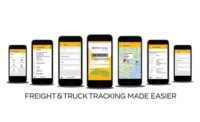Third-party logistics helps snack and bakery companies streamline delivery




Many corners of the bakery and snack market operate under tight margins, leaving little room for error. A delayed delivery can result in goods that arrive too late to be sold. Visibility of each truck and real-time updates showing progress of the delivery schedule are essential to keep deliveries on track and customers informed.
Third-party logistics (3PL), the use of a third-party business to outsource elements of a company’s warehousing, distribution and/or fulfillment services, can help snack producers and bakeries deliver products more effectively, often customized to meet customer needs.
Ongoing improvements
3PL providers are making significant technology investments to help shippers refine their supply-chain planning practices, according to Rick Zaffarano, vice president of consumer products solutions, Transportation Insight, Hickory, NC.
“While some companies are directing a portion of that investment toward future technologies, such as blockchain and artificial intelligence (AI) algorithms, for many bakery and snack producers, the focus is on making sure that supply chain data is correct before integrating it into operational decision-making. Accurate data leads to better decision-making,” Zaffarano says.
Route planning and execution software, such as that offered by Paragon Software Systems, Dallas, gives 3PL providers real-time visibility of what’s going on in the field, according to Phil Ingham, support director. “Using route planning software helps 3PL providers manage fluctuations in order quantities, multi-temperature deliveries, tight delivery-time windows and the challenges presented by a variety of delivery locations.”
Data capture, analysis and tracking are important in meeting the demands of today’s consumers who expect fast, convenient delivery. Shippers must be able to anticipate and predict demand. To fill this need, HighJump, Minneapolis, offers Enterprise 3PL WMS, which captures and tracks data and allows customers to analyze the results. It’s a paperless billing solution; billing can be done at the SKU level. “Many 3PL providers use the software for tracking food storage within all temperature zones,” says Derek Curtis, vice president sales, DSD & Mobile Logistics Group.
Data capture, analysis and tracking technologies are especially important for bakery and snack producers that deliver to major retailers. It’s essential for them to confirm on-time delivery and to know where their trucks are in transit so they can avoid late delivery fees or production shutdowns. Tracking tools enable shippers and 3PL providers to monitor not just location, but temperature and tampering, as well.
“Tracking and temperature monitoring technologies help shippers prevent contamination or damage,” says Jesse Juett, senior business development representative, Zipline Logistics, Columbus, OH. The company offers the KanoPI shipper intelligence platform, which provides transparency for logistics performance.
DTS Logistics, Billings, MT, partners with carriers who utilize connected sensors to monitor critical aspects of load safety and integrity. The company recently upgraded its software package and is trying to use all the data that can be pulled from it, according to Steve Moss, logistics manager. “Tracking is becoming big, but as a 3PL provider, it is a challenge to figure out how to track a partner carrier’s truck. There are apps and programs for doing that, and carriers are more willing to share and/or allow us to track their trucks. We specialize in LTL (less than truckload) refrigerated shipping, which is even more difficult to track, because loads can change trucks/trailers many times before arriving at the destination.”
Improved efficiencies
Moss does not see much change in direct store delivery (DSD), as most of what DTS Logistics ships is sent to grocery warehouses. “We did, however, have a customer ask us to look at shipping from one warehouse to eight to 12 of their stores on one truck. They were comparing the efficiencies and costs of doing it this way, rather than having it shipped out of multiple warehouses.”
Both shippers and receivers prefer not to have freight sitting on their docks. So warehouses are pushing back on holding ingredients and are more focused on “just in time” production schedules, which drive home the importance of on-time delivery. “Some ingredient suppliers are opting to use rail to extend their transit times. In fact, refrigerated rail is one of our fastest-growing modes. Using this longer transit option helps to keep freight moving, and does not eat up valuable warehouse space,” says Juett.
Darin Cooprider, vice president and general manager of consumer packaged goods, Ryder System, Inc., Miami, says efficiencies are improving across the board in warehousing and distribution. “Perhaps one of the biggest disruptors in the industry is the emergence of commercial electric vehicles. Electric medium-duty, delivery-style trucks are particularly well-suited for DSD, especially in highly populated urban areas.”
Ryder has partnered with several electric vehicle manufacturers to help transition its customers to alternative fuel technologies, which deliver cost savings on fuel, as well as the maintenance associated with gas and diesel vehicles. In addition, the company offers preventative maintenance solutions to service the vehicles.
The Food Safety Modernization Act (FSMA) has impacted many distributors as they attempt to remain compliant and improve tracking capabilities. “Specifically, the process of capturing production lot numbers and expiration dates has added tasks to field users who are managing the delivery of food products. Inefficient processes can lead to additional costs, so this is an area driving investment and overall process review,” says Curtis.
Frozen food warehousing and distribution continues to grow and presents another level of complexity for distribution networks. Without a large number of strong regional carriers that can handle frozen LTL shipments in the North American marketplace, bakeries that offer frozen product are finding it necessary to look for full truckload solutions containing multiple stops along the route, according to Zaffarano. “Because these distribution solutions are more complex, reliance on technology—and partners that leverage the technology—to ensure execution and meet scheduling needs is becoming more important.”
While frozen products offer major growth potential, transportation of frozen products is costly and more complicated than dry transportation, according to Juett. “It’s essential that brands partner with a reliable and knowledgeable 3PL provider if they choose to enter the market. Working with such a provider gives brands access to numerous refrigerated carriers across multiple regions.”
DTS Logistics works with many bakeries that historically have stored and shipped their products frozen, which makes it easier to meet demand. “As a new bakery supplier grows, it makes sense to do so. Fresh products have a longer shelf life when frozen or chilled, and it rarely affects the taste,” says Moss.
3PL providers do face challenges in the era of e-commerce, according to Bryan Jensen, chairman, St. Onge Co., York, PA, who aids clients in supply-chain optimization and 3PL partner procurement. “3PL providers are struggling to balance technology investments in labor-intensive e-commerce fulfillment operations with the ability to make those investments fiscally feasible, given the usual terms of 3PL contracts (three to five years). This short contract length makes it difficult to garner enough ROI to encourage 3PL providers to make the investment or for users to pay the premium (at least short term) for such an investment.”
There will always be initial pushback from small- to mid-size companies against using a 3PL provider and adding another layer of communication between their team and their drivers, according to Juett. Once that hurdle is crossed, though, snack producers and bakeries can gain access to a wider carrier base, allowing for more competition on valued or high-traffic lanes. “Working with a 3PL provider allows companies to access transportation expertise. For example, Zipline has expertise in delivery to major retailers and can provide those insights to customers.”
Cooprider says the greatest challenge that 3PLs face today is a shortage of talent. “3PL providers are large users of labor in terms of drivers and warehouse workers. Coupled with historically low unemployment, the available talent pool is small, which makes hiring and retaining talent that much more difficult. As a result, we’ve seen an uptick in outsourcing of distribution and warehousing labor.”
Looking for a reprint of this article?
From high-res PDFs to custom plaques, order your copy today!









